There are so many studios and companies with different BJD series in the market. As a newcomer, you may find it hard to choose the right dolls. Don’t worry!
Here I will introduce some common sizes of Uhlobo and its accessories (like eyes and wigs, etc.). I hope it can help you find the dolls and accessories that suit you.
1. The Sizes of BJD
Common sizes: 1/3 of a human’s height, 1/4 of a human’s height, 1/6 of a human’s height, and uncle size.
Special sizes and bodies: 1/6 of adult size, 1/2 of human’s height, 1/8 of human’s height, 1/12 of human’s height, human-size (1/1 of human’s height), and animal BJDs
By scaling down the human’s height, you can get different sizes. 1/3 of a human’s height (called 1/3), for example, means 1/3*180 cm. Most 1/3 dolls in earlier days were around a standard of 60 cm in height.
Further Reading: The Ultimate Size Guide For Volks BJD Dolls
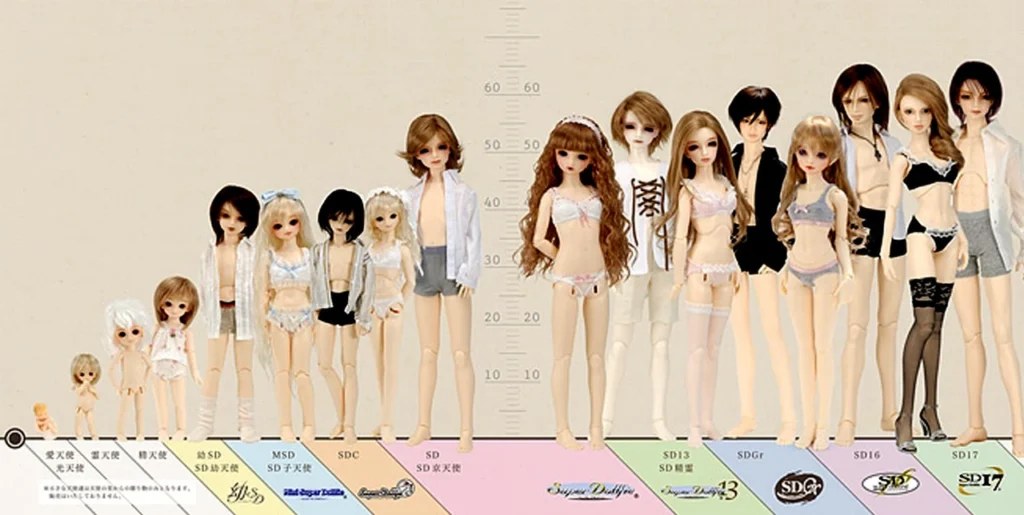
But as the BJD market booms, the sizes get much more diverse. The heights of 1/3 dolls vary from 58cm to 65cm. So the standard becomes vague now. Below are some general heights for different sizes of dolls.
| Size Category | Approximate Height |
|---|---|
| 1/2 | Around 80-90 cm |
| Uncle | Around 70 cm |
| Sister | Around 68 cm |
| 1/3 | Female: 58-62 cm; Male: 58-65 cm |
| 1/4 | 40-46 cm; “Smaller 1/4” if below 40 cm |
| 1/6 | Around 26 cm |
| 1/8 | Around 18 cm |
| 1/12 | Below 12 cm |
16cm is very common. You may wonder what kind of size it belongs to. 1/8? or 1/12? We cannot tell right now because its classification is still to be defined.
The special bodies vary from 1/3 of baby size to 1/6 of adult size. Even if the dolls are of the same height, their accessories cannot be shared because of different ages and styles.
It will look so weird if you match a doll’s head, body, and hands with different colors and sizes at random. So please don’t do that.
Generally speaking, the clothes, wigs, and other accessories of dolls cannot be shared unless their sizes are too special.
The sizes of dolls from different studios and companies may differ from each other even if they are of the same height. Let’s take 1/3 doll’s head as an example. Some head circumferences are 21 cm, and some are around 23. Even if they have the same head circumference, their neck sizes may be different. Be clear about the colors and sizes if you match the head from company A with a body from company B and hands or other resin accessories from company C. You may ask for some advice from other players.

As shown in the image, there are some differences in height and size among the uncles. They are classified into slim uncles, average uncles, and muscular uncles in general.
2. The Textures & Sizes of BJD Wig
BJD wigs are made of different textures like high-temperature fiber, hairy fiber, heat resistant fiber, kanekalon, wool, mohair, njll. High-temperature fiber wig is the most common. You can get almost all styles with colors you’d like. The price varies, of course.
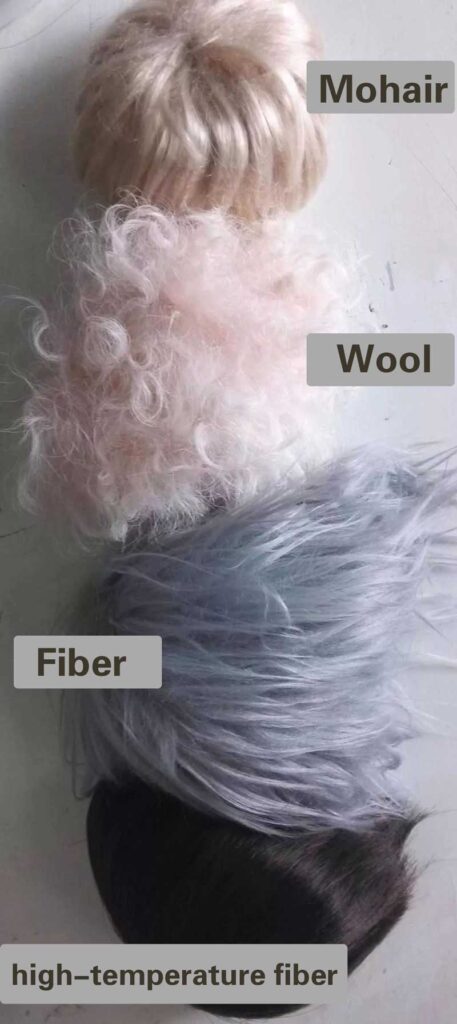
Most dolls should wear wigs in corresponding sizes. For example, wigs of 1/4 size are for 1/4 dolls and 1/3 size for 1/3 dolls. Only a few with special sizes can share wigs subject to their head circumferences.
Wigs are usually resilient except for hairy fiber and wool ones. So get the right wigs for your dolls.
Besides, some companies use inches to measure size.
9-10 inch equals to 22-24 cm
8-9 inch equals to 21-22.5 cm
7-8 inch equals to 1/4 size
6-7 inch equals to 1/6 size
3. The Textures & Sizes of BJD Eyes
According to different textures, BJD eyes can be divided into glass eyes, acrylic eyes, and resin eyes. These eyes can reflect light, which creates an illusion that the dolls’ sight follows you.
And when photographing, it feels like they are looking at the camera. Pretty eyes make your dolls more vivid, which is a significant feature of BJD.
Glass eyes are the most common of all kinds. There is a wide variety of sizes, colors, and patterns. Price may vary from $10 (for a pair of domestic mandarin duck eyes) to thousands of dollars, depending on different crafts and regions.
You can buy a pair of domestic glass eyes at a price of a few dozen to a hundred dollars, while foreign ones at hundreds of dollars. Glass eyes can be graded as grade A and grade B based on their appearance (whether they are symmetrical and whether they have bubbles.)
Acrylic eyes have more patterns. They are suitable for players to DIY because of their remarkable plasticity.
Nokho, since acrylic eyes have less light penetrability than glass ones and resin ones, they don’t look that vivid either. Their costs and prices are lower than the other two kinds.
Resin eyes combine the features of both glass and acrylic ones. They are rather rare because it is not easy to make. There are some excellent resin eyes makers at home and abroad. Besides, they have a defect that resin will yellow.
Another rare kind is soft eyes. They can well fit eye sockets but are easily stained. Only foreign companies produce this kind at present.
According to different shapes, the eyes can also be classified into high radian, low radian (of the iris), small iris, normal iris, big iris, sphere, boat shape, chess shape, hemisphere, hollow ones, and solid ones, njll. Though they have their own merits and faults, they meet the needs of different forms of BJD eyes. You can check the details about different eye sizes. By the way, no eyes are needed for dolls with closed eyes.
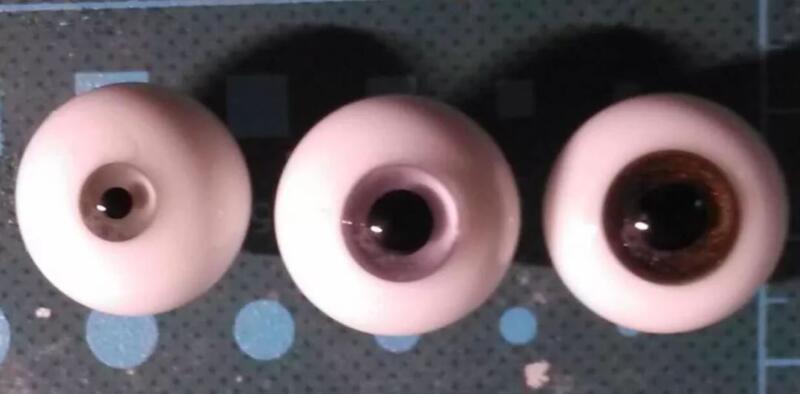
Small iris, normal iris, and big iris of the same base size

Eyes of different textures and sizes
4. Supplement
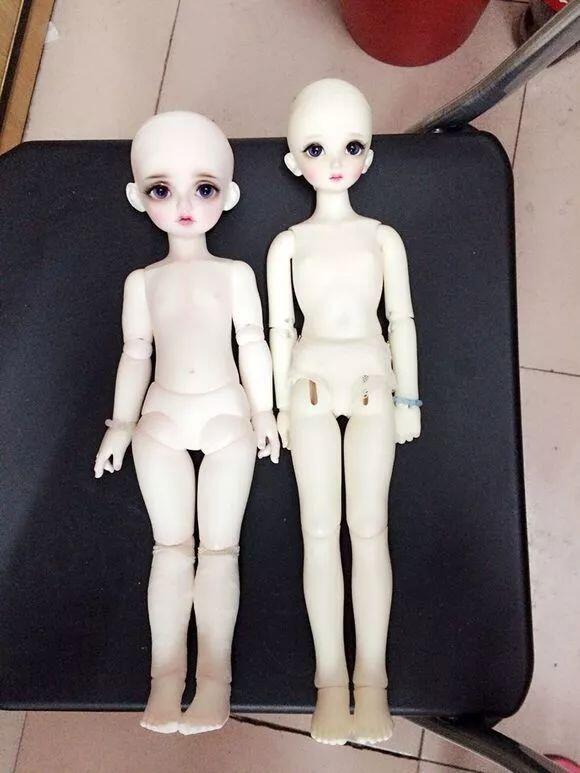
1/4 giant baby vs. 1/4 I-MSD
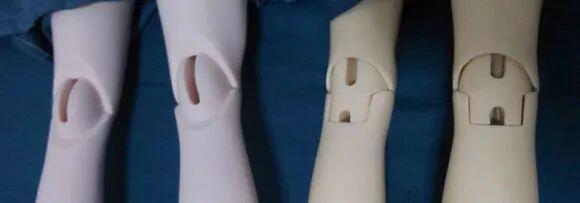
Single-jointed vs. double-joined
To conclude, this introduction provides newcomers with some general knowledge about the common sizes and textures of BJD, its wigs, and its eyes. Please feel free to add anything. I wish every BJD player could find their dream dolls!






